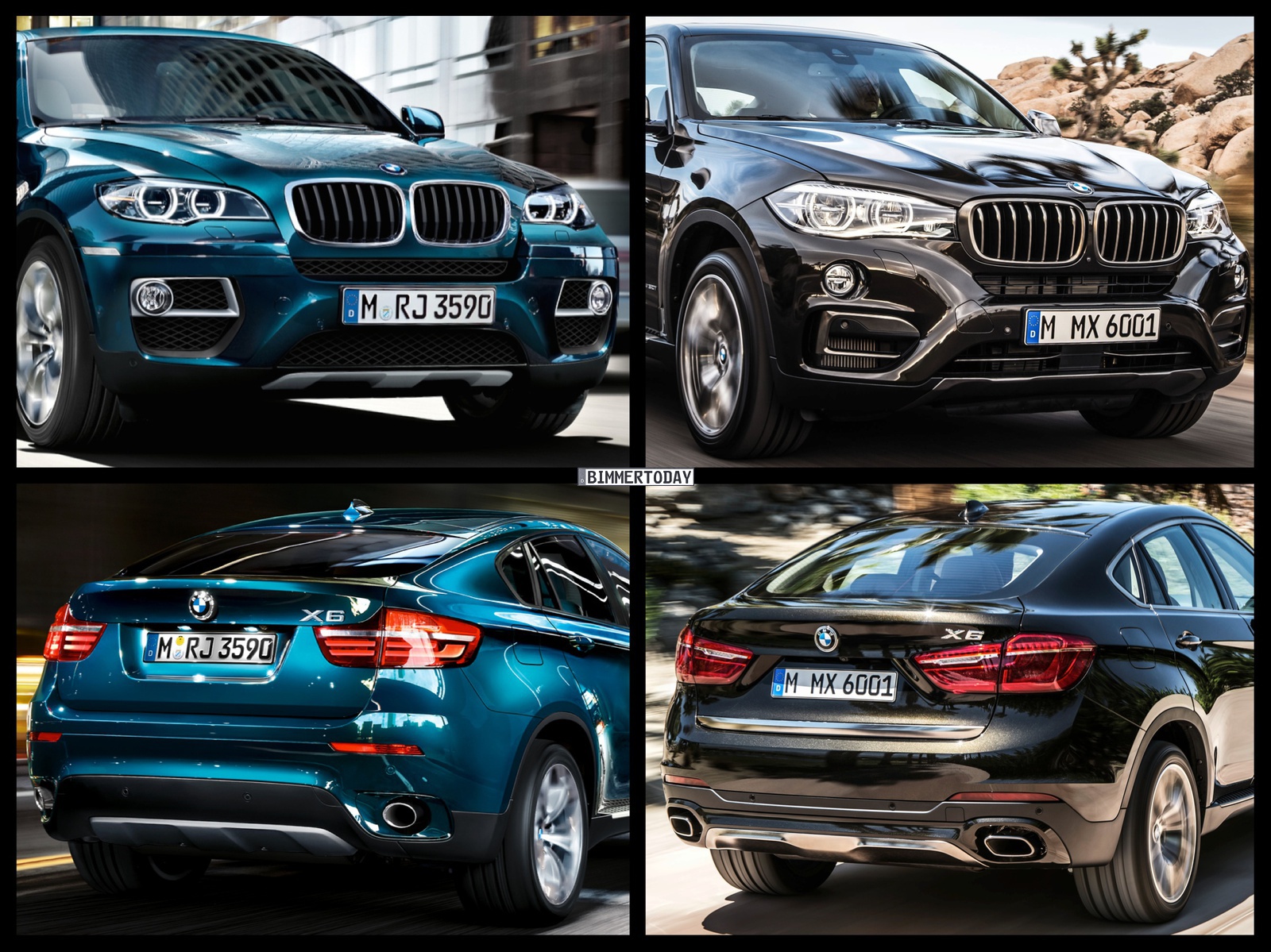The BMW X6 has evolved significantly since its debut, with each generation bringing new features, technologies, and design philosophies. The comparison between the earlier E71 model and its successor, the F16, highlights the advancements in performance, luxury, and driving dynamics that have defined the brand over the years.
In this article, we will explore the differences and similarities of the two models, emphasizing key aspects such as design, engine options, and interior comfort. The analysis of the F16 BMW X6 vs. E71 BMW X6 will provide insights for potential buyers and enthusiasts, making it easier to appreciate their respective strengths and weaknesses.
F16 BMW X6 vs. E71 BMW X6: Key Differences Explained
When comparing the F16 BMW X6 with the E71 BMW X6, one of the most notable differences lies in their design language. The F16 offers a more aggressive and modern aesthetic, featuring sharper lines and a sleeker profile. In contrast, the E71 presents a more traditional SUV design, which, while robust, lacks the contemporary flair of its successor. This evolution in design reflects BMW’s commitment to maintaining its luxury image while appealing to a broader audience.
Performance is another critical aspect where the two models diverge. The F16 X6 is equipped with more powerful engine options, including enhanced turbocharged variants that provide improved acceleration and efficiency. Meanwhile, the E71, while still capable, does not offer the same level of performance enhancements. Here’s a quick comparison of their engine options:
- E71: 3.0L inline-6, 4.4L V8 options
- F16: 3.0L inline-6 turbo, 4.4L twin-turbo V8 options
Interior comfort and technology features also see significant upgrades in the F16. With a more refined cabin layout and the latest infotainment systems, the F16 offers a superior experience. The E71, although luxurious for its time, lacks many of the modern conveniences that drivers expect today. Key interior features to note include:
- F16: Gesture control, larger infotainment display, advanced driver-assistance features
- E71: Standard infotainment system, limited driver-assistance options
Performance Comparison: F16 vs. E71 BMW X6 Models
When comparing the performance of the F16 BMW X6 and the E71 BMW X6, one of the primary factors to consider is the powertrain technology. The F16 features state-of-the-art engine options that not only enhance power but also improve fuel efficiency. With the introduction of turbocharging across the lineup, enthusiasts can expect a more exhilarating driving experience, marked by quicker acceleration and responsive handling.
The F16 model benefits from improvements in its suspension system, which contributes to a more dynamic driving performance. This evolution allows for a smoother ride while maintaining the sporty characteristics BMW is known for. In contrast, the E71, while still offering a competent performance, lacks the advancements that elevate the driving dynamics of its successor. Here’s a brief comparison of their acceleration capabilities:
| Model | 0-60 mph (seconds) | Top Speed (mph) |
|---|---|---|
| E71 | 6.0 | 150 |
| F16 | 4.6 | 155 |
Additionally, the F16 offers advanced driving modes that allow drivers to customize their experience, enhancing both comfort and sport settings. The E71, while equipped with standard modes, does not provide the same level of personalization or technology integration. This feature contributes to the F16’s appeal, especially for performance-oriented drivers looking for that extra edge on the road.
Design Evolution: How the F16 BMW X6 Outshines the E71
The design evolution from the E71 to the F16 BMW X6 is evident in the bold and dynamic styling of the newer model. The F16 incorporates sharper edges and a more sculpted silhouette, allowing it to stand out on the road. In contrast, the E71’s design, while still appealing, appears more subdued and traditional. This shift in design philosophy reflects BMW’s effort to capture a more contemporary market that values sporty aesthetics.
One of the standout features of the F16 BMW X6 is its aggressive front fascia, which includes larger air intakes and sleeker headlamps. These elements not only enhance the vehicle’s visual appeal but also improve aerodynamic efficiency. The E71, while maintaining a strong presence, lacks the same level of modern flair. Key design highlights of both models include:
- F16: Enhanced LED lighting, muscular wheel arches, refined rear design
- E71: Classic kidney grille, rounded edges, more conservative rear styling
Inside, the F16 BMW X6 showcases a significant upgrade in materials and layout, creating a more luxurious and driver-focused environment. The use of high-quality finishes and advanced technology elevates the overall experience. The E71’s interior, although sophisticated for its time, does not offer the same blend of comfort and high-tech innovation found in its successor. Notable interior advancements in the F16 include:
- F16: Ambient lighting, improved seating ergonomics, premium sound systems
- E71: Standard materials, basic infotainment layout, less customizable options
Fuel Efficiency: F16 BMW X6 vs. E71 BMW X6
When examining the fuel efficiency of the F16 BMW X6 compared to the E71 BMW X6, distinct differences emerge that highlight BMW’s advancements in engineering. The F16 model incorporates more efficient turbocharged engines, which not only enhance performance but also optimize fuel consumption. As a result, drivers can expect better mileage in everyday driving conditions, making the F16 a more appealing choice for those conscious of fuel costs.
In terms of specific figures, the F16 BMW X6 achieves notable improvements in its miles per gallon (MPG) ratings compared to the E71. For instance, the F16’s inline-6 turbo engine can deliver up to 24 MPG in the city and 30 MPG on the highway, while the E71’s comparable engine averages around 18 MPG city and 25 MPG highway. This improvement is largely due to advancements in engine technology and aerodynamics.
Moreover, the F16 also benefits from enhanced transmission systems that contribute to its overall efficiency. The 8-speed automatic transmission in the F16 allows for smoother gear shifts and better fuel economy, whereas the E71’s 6-speed transmission, while competent, does not match the efficiency levels of its successor. This technological upgrade is vital for those who prioritize both performance and economy.
Overall, the differences in fuel efficiency between the F16 and E71 BMW X6 models are significant enough to influence purchasing decisions. The F16’s combination of advanced engine technology and improved aerodynamics makes it a superior choice for drivers seeking a balance of power and economic operation. Here are the key fuel efficiency highlights:
- F16 BMW X6: Up to 24 MPG city / 30 MPG highway
- E71 BMW X6: Approximately 18 MPG city / 25 MPG highway
Tech Features: What’s New in the F16 BMW X6 Compared to the E71
The F16 BMW X6 introduces a host of technological advancements compared to the E71 BMW X6, particularly in its infotainment and connectivity features. The F16 is equipped with BMW’s latest iDrive system, which boasts a more intuitive interface and a larger touchscreen display. This improvement allows for easier navigation and access to various media options, ensuring a more user-friendly experience for drivers and passengers alike.
Furthermore, the F16 incorporates advanced connectivity options, including Apple CarPlay and Android Auto, which were not available in the E71. This allows for seamless integration with smartphones, enabling drivers to utilize their favorite apps and features directly from the vehicle’s interface. Additionally, the F16 offers an enhanced sound system and improved Bluetooth functionality, making it a significant upgrade in terms of technology and convenience.
Another noteworthy technological feature in the F16 BMW X6 is the introduction of advanced driver assistance systems. The F16 comes with options such as adaptive cruise control, lane departure warning, and parking assist, which greatly enhance overall safety and driving ease. In contrast, the E71 lacks many of these modern safety features, reflecting the evolution of automotive technology and consumer expectations over the years.
In summary, the technological enhancements in the F16 BMW X6 compared to the E71 highlight BMW’s commitment to innovation and driver satisfaction. With state-of-the-art infotainment systems, improved connectivity, and advanced safety features, the F16 offers a more comprehensive and enjoyable driving experience, appealing to tech-savvy consumers and luxury car enthusiasts alike.
User Reviews: Real Owner Experiences of F16 and E71 BMW X6
Owner experiences of the F16 BMW X6 reveal a strong appreciation for its luxurious interior and enhanced performance. Many drivers highlight the smooth ride and powerful engine options that make it ideal for both city driving and long journeys. Owners often note the advanced technology, such as the intuitive iDrive system, which adds to the overall driving experience. However, some users express nostalgia for the simpler controls of the E71 BMW X6, indicating that while the F16 is superior in many ways, there is a charm in the older model’s straightforward interface.
In comparing the two models, a common theme among users is the evolution of comfort. Many owners of the F16 appreciate features like ambient lighting and improved seating ergonomics, which significantly enhance the long-distance travel experience. In contrast, E71 drivers appreciate its robust build and classic styling, often stating that it feels more rugged and dependable. Feedback from both groups reveals a divided preference based on whether owners prioritize modern luxury or traditional sturdiness in their vehicle.
Additionally, fuel efficiency has become a hot topic among owners. F16 drivers frequently highlight the superior mileage they experience due to the upgraded turbocharged engines. Many report that they can achieve nearly 30 MPG on the highway, making it a practical choice for daily use. By contrast, E71 owners acknowledge the older model’s thirst for fuel, with many noting that while it offers power, it doesn’t compare when it comes to efficiency. This distinction is especially relevant for those considering long-term ownership costs.
Finally, the technological advancements in the F16 have created a buzz among tech-savvy drivers. Owners value features like Apple CarPlay and advanced driver-assistance systems that greatly enhance safety on the road. Feedback from E71 owners suggests that while their vehicles were equipped with basic technology for their time, the lack of modern features makes the F16 feel much more relevant to today’s driving experience. Overall, these real owner experiences paint a vivid picture of the evolution from the E71 to the F16 BMW X6, showcasing a clear shift in luxury, performance, and technology.



